Save our savannahs!
Discover what makes the world’s great grasslands so awesome…
Savannahs are among the largest ecosystems in the world. Plus, they’re home to some of the planet’s coolest members of the animal kingdom – from lions and leopards, to meerkats, hyenas and stripy zebras. Join us as we go on a savannah safari and learn how YOU can help save this amazing savannah habitat!
Virtual expeditions!
– Explore the wildlife-packed savannah of Africa with these webcams:
Tembe Elephant Park webcam
Waterhole webcam
– Visit Africa’s savannahs with Google Earth!
– Check out Google’s amazing AR animals on your smartphone! Google one of the animals on the list below. If your phone is compatible, you should see a card that look like this:
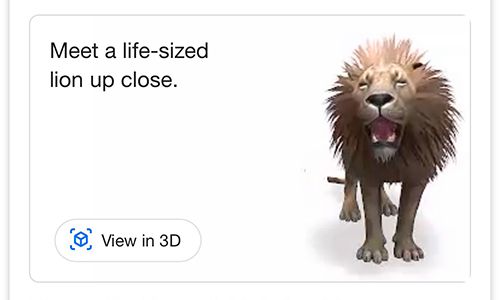
Simply tap ‘View in 3D’ and enjoy!
Alligator
Angler fish
Bear
Brown bear
Cat
Cheetah
Deer
Dog
– French Bulldog
– Golden / Labrador Retriever
– Pomeranian
– Pug
– Rottweiler
Duck
Eagle
Emperor penguin
Goat
Hedgehog
Horse
Leopard
Lion
Macaw
Octopus
Panda
Penguin
Raccoon
Shark
Shetland pony
Snake
Tiger
Turtle
Wolf
Super habitat!
Savannahs are flat grasslands with scattered trees and shrubs. They’re usually found near to the equator (the halfway point between the north and south parts of the Earth). This part of the world gets more direct sunlight than anywhere else, so the temperature is warm, all year round!
Savannahs only have two seasons instead of four – wet and dry. This is because seasons there are defined by how much rain falls. In fact, there’s so much rain in the wet season, which lasts about six months, that it’s known as ‘monsoon season‘. During these rainy months, a savannah can get 50 to 120cm of rain! This soggy weather helps the grasses that grow there to flourish – creating a habitat where different animals and birds can thrive.
DID YOU KNOW?
The world’s largest land mammal – the African elephant – lives on the African savannahs!
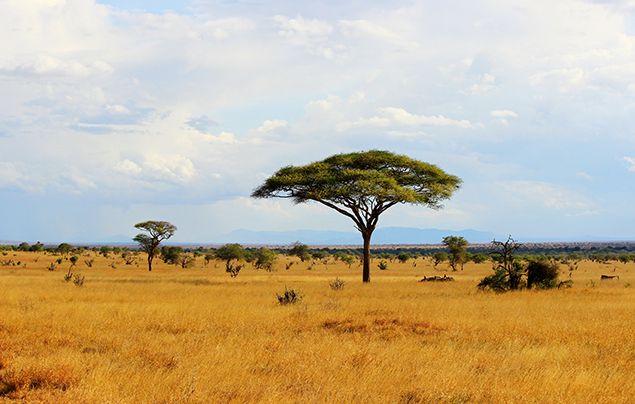
Plants that grow in savannahs have to be able to survive long periods without rain. So, they have long roots that can reach far down into the earth for water, and trunks that can store moisture. Some grasses on savannahs have developed a nifty method of survival – they have a bitter flavour, designed to deter snack-seeking creatures! Other grasses grow from the bottom up, so grazing critters don’t damage the plant’s new growth!
DID YOU KNOW?
No two zebras have the same pattern of stripes – they all have unique markings!
Wonderful wildlife!
The dry, humid savannah landscape is so rich in grasses and tree life, it’s the perfect home for large herbivores (plant eaters), such as buffaloes, zebra and giraffes. However, they’re not alone – there are also lots of hungry predators roaming the savannah, including lions, hyenas, cheetahs, black mambas and leopards – yikes!
Wild dogs
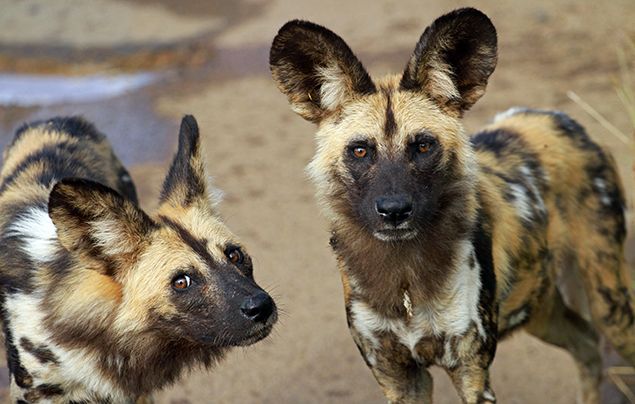
African wild dogs like hanging out together in packs of 10 to 40. They hunt together too, tackling antelope, gazelle and larger prey – such as wildebeests – especially if the animal is ill or injured. These dogs are good runners and can sprint at speeds of over 70kmph! Sadly, African wild dogs are endangered, but conservation groups are working hard to save this furry species!
Wildebeest
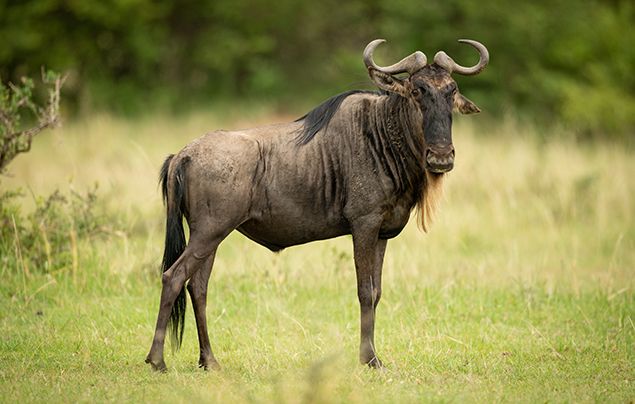
During the African savannah’s dry season, herds of wildebeest merge to follow the rains northward from the Serengeti in Tanzania to the Maasai Mara in Kenya. Often called the Great Migration, it’s one of the most amazing wildlife spectacles on Earth – involving up to 1.5 million wildebeest, along with hundreds of thousands of other animals, including zebras and gazelles! In the Mara River, hungry crocodiles wait to snatch the wildebeest attempting to cross the river – eek!
Cheetahs
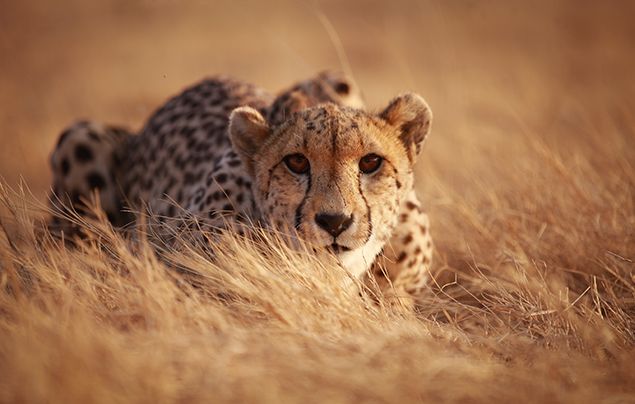
Cheetahs are usually found roaming the open, grassy savannah plains of Africa. They’re the fastest land animal in the world and can chase after prey at speeds of up to 112kmph! Sadly, cheetahs are threatened by loss of habitat and prey, as well as conflict with humans. The good news is that conservationists are working hard to help these awesome animals.
DID YOU KNOW?
Savanna elephants are the world’s largest land mammals!
Black rhinos
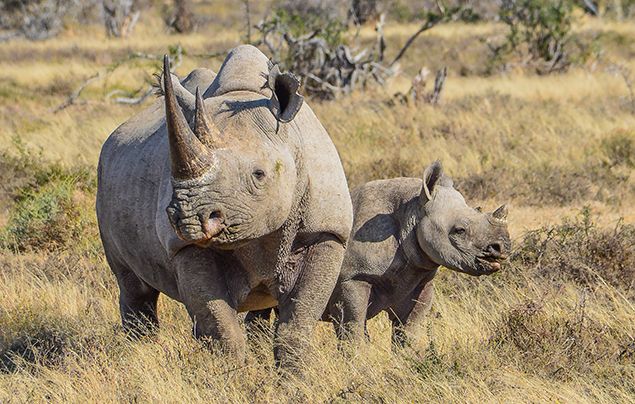
Black rhinos have special pointed lips that help them pluck leaves and fruit from the branches of bushes and trees. They can often be found lying in the shade to escape the hot savannah sun, or wallowing in a muddy water hole – the mud helps the rhinos cool off, and works as a natural sun lotion! Sadly, poaching saw the black rhino population drop by 98% between 1960 and 1995. Today, conservation efforts across Africa have helped bring this brilliant creature back from the brink of extinction – wahoo!
DID YOU KNOW?
When a predator kills an animal, vultures keep a look out and swoop down to gobble up any leftovers!
Planet protectors!
Climate change and poaching may threaten our savannahs, but there are tons of incredible people working hard to protect them and the awesome animals that live there…
Hi‐tech help
When a study revealed that Africa’s savannah elephant population had decreased by a third, researchers at Cornell University in America came up with a new way to help. They used special equipment to record sounds the elephants made in the wild, then used AI (artificial intelligence) to help work out the best way to protect the beautiful beasts from poachers!
Park perfection
A conservation group, called African Parks, has taken a new approach to rescuing Africa’s wild spaces. By providing all the resources to help parks, the group are in a better position to tackle poaching and other issues. They recently removed over 5,000 hunting snares from Liwonde National Park and have relocated 520 elephants!
Cool countries
Sadly, the number of giraffes in Africa has fallen by 40% in the last 30 years, due to poaching and habitat loss. But six African countries – the Central African Republic, Chad, Kenya, Niger, Mali, and Senegal – have pledged to do more to protect the long‐necked critters, and aim to stop giraffe meat and products being bought and sold. Great news!
How YOU can help!
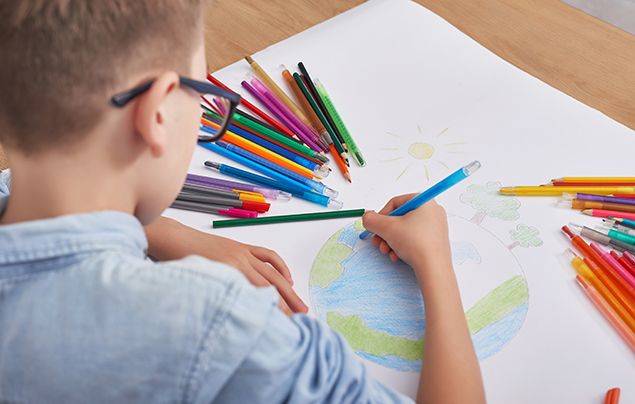
Did you love learning about our planet’s super savannahs? Do you feel inspired to help protect them? Here’s how you can lend a hand without even leaving the house…
Club together!
Throw a savannah-themed joke-a-thon for your friends and family, in support of a wildlife charity that’s working to protect this incredible habitat! Send them a funny joke every day for a week (or even a month!). It’ll get them giggling for a good cause!
Save energy!
You can protect our amazing savannahs by helping to prevent climate change. Always turn off electrical items when you’re not using them, switch to energy-saving lightbulbs, and try to recycle and reduce your food waste whenever you can. All these little things add up and will help make a difference!
Raise awareness!
Help raise awareness of the savannah animals that need our help by writing a story about them. Then, gather your family and read it to them – you can do this over the phone with friends and family who don’t live with you. You could also consider adopting an endangered savannah animal, like the black rhino, through a wildlife charity, and inspire others to do the same!
MAKE A SAVANNAH MEMORY GAME!
Cut cardboard into 10 rectangles. Leave one side of the cards blank, and draw a cool creature on the other side – making two cards for each animal. Once you have five pairs of cards, mix them up and place them face down. Then flip over two cards at a time and try find the matching pairs!
Remember gang, if we all work together, these amazing habitats and the animals that live in them can get the protection they need.
Do you feel inspired to save our savannahs? Let us know by leaving a comment, below!
More Like
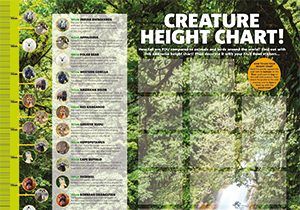
Collect wildlife stickers with Fruit Bowl & NG KiDS!

Terror-ific witches’ fingers Halloween recipe!

GIVE YOUR DREAMS A HEAD START WITH OSMO
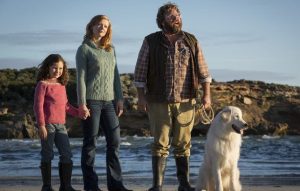








LEAVE A COMMENT
THANK YOU
Your comment will be checked and approved shortly.
WELL DONE,
YOUR COMMENT
HAS BEEN ADDED!
COMMENTS
Wow!
Let’s save our amazing earth!!!!!
love this web LOL
CUSTOMIZE YOUR AVATAR